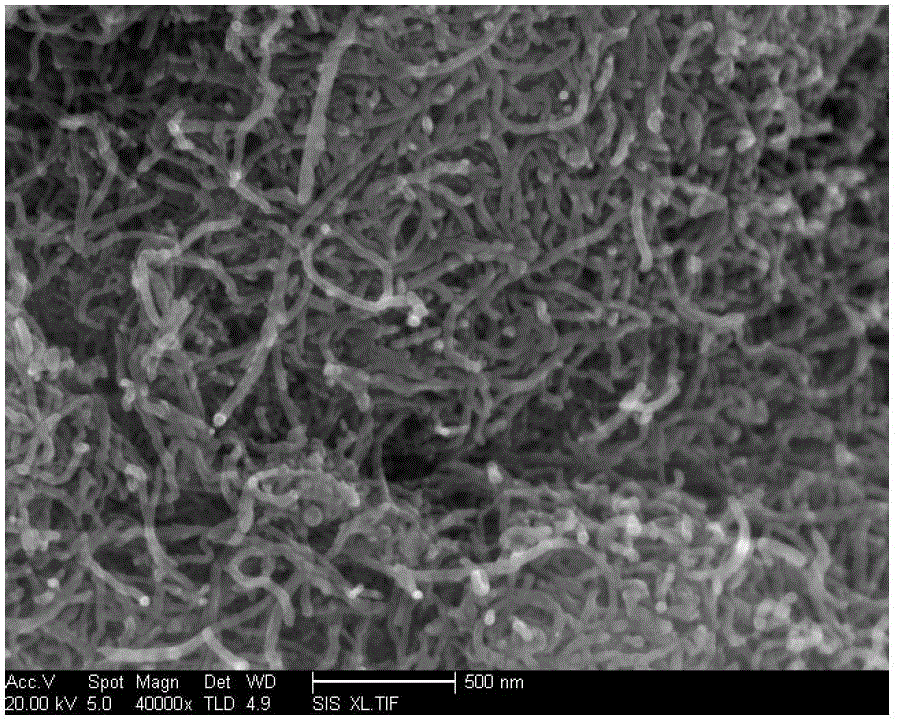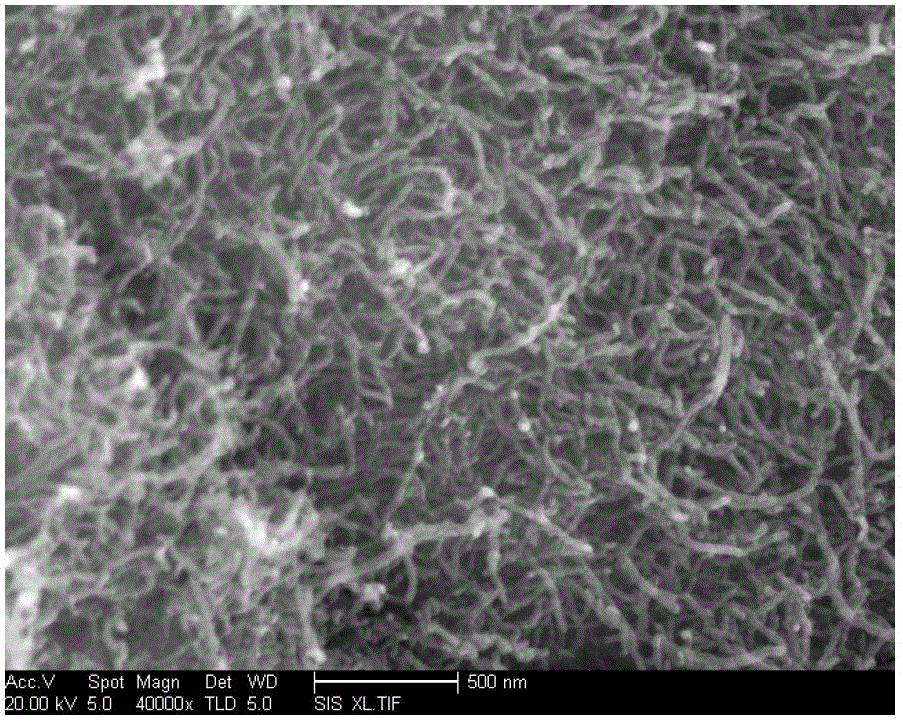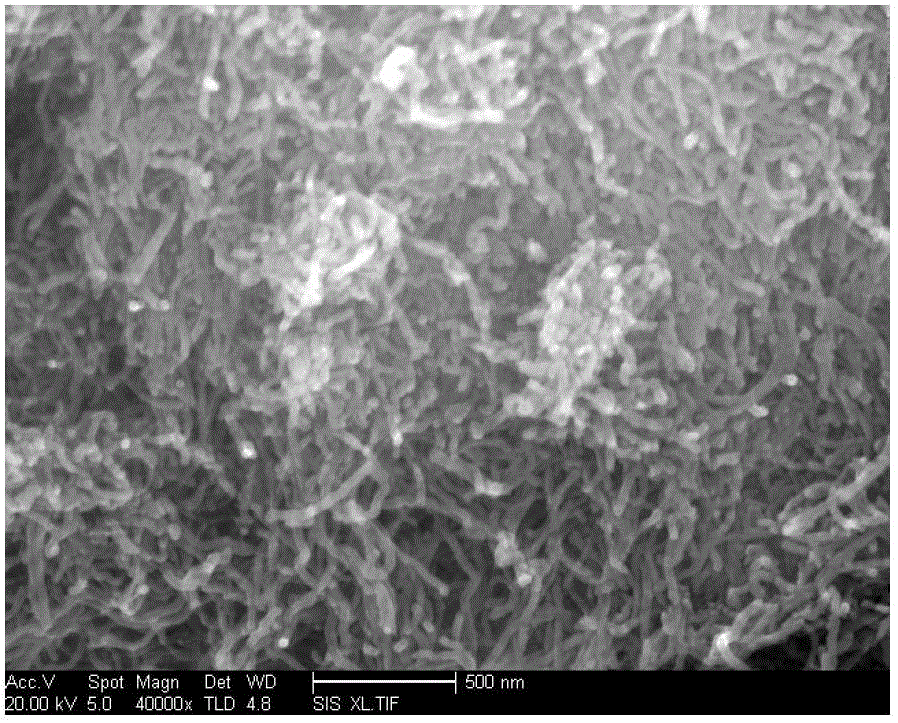Preparation method of hydroxylated multi-wall carbon nanotube-polysilane composite material
A multi-wall carbon nanotube and composite material technology is applied in the field of preparation of multi-wall carbon nanotube-polysilane composite materials, can solve the problems of complex synthesis steps, difficult reaction control, low content of silicon elements, etc., and achieves simple synthesis steps , improve thermal stability and electrical conductivity, improve the effect of reactivity
- Summary
- Abstract
- Description
- Claims
- Application Information
AI Technical Summary
Problems solved by technology
Method used
Image
Examples
specific Embodiment approach 1
[0023] Embodiment 1: This embodiment is a method for preparing a hydroxylated multi-walled carbon nanotube-polysilane composite material, which is specifically completed according to the following steps:
[0024] 1. Purification: (1) Calcination: First, calcine the multi-walled carbon nanotubes at a temperature of 420°C~480°C for 20min~40min to obtain the calcined multiwalled carbon nanotubes; (2) Nitric acid purification: the calcined Pour the multi-walled carbon nanotubes into the nitric acid aqueous solution with a concentration of 3mol / L~6mol / L, and stir for 12h~24h at a temperature of 20°C~25°C and a stirring speed of 500r / min~1000r / min, and then use G4 sand core funnel is filtered, and the filter cake obtained by filtering is rinsed with distilled water until the pH of the filtrate=7±0.1, that is, the multi-walled carbon nanotubes after nitric acid purification are obtained; (3) hydrochloric acid purification: the purified nitric acid The multi-walled carbon nanotubes we...
specific Embodiment approach 2
[0036] Specific embodiment two: the difference between this embodiment and specific embodiment one is: the dichlorosilane derivatives described in step three (2) are dimethyl dichlorosilane, diethyl dichlorosilane, dipropyl Dichlorosilane, methylphenyldichlorosilane or methylvinyldichlorosilane. Others are the same as the first embodiment.
specific Embodiment approach 3
[0037] Specific embodiment three: the difference between this embodiment and specific embodiment one or two is: the organic solvent described in step four (1) is toluene, xylene, octane or cycloheptane. Others are the same as those in Embodiment 1 or 2.
PUM
| Property | Measurement | Unit |
|---|---|---|
| diameter | aaaaa | aaaaa |
Abstract
Description
Claims
Application Information
 Login to View More
Login to View More - R&D
- Intellectual Property
- Life Sciences
- Materials
- Tech Scout
- Unparalleled Data Quality
- Higher Quality Content
- 60% Fewer Hallucinations
Browse by: Latest US Patents, China's latest patents, Technical Efficacy Thesaurus, Application Domain, Technology Topic, Popular Technical Reports.
© 2025 PatSnap. All rights reserved.Legal|Privacy policy|Modern Slavery Act Transparency Statement|Sitemap|About US| Contact US: help@patsnap.com



